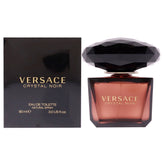Fragrance Notes: Everything You Need to Know
Perfume can significantly benefit our wardrobes. Fragrances lend us a distinct aura and presence, whether we wear them for a date night or a workday in the office.
The use of fragrance notes contributes to each person's unique presence. They are the various ingredients that, when combined, create a cohesive, appealing perfume, much like musical notes make up a song.
To help you better understand your favorite perfumes, we've produced this guide that describes fragrance notes and everything you need to know about them. In addition, we can help you locate a perfume depending on the aroma notes you prefer.
What are Fragrance Notes? (Explained)
The distinct aroma layers of a fragrance's components are known as fragrance notes. They serve as a fragrance's fundamental components and shape its overall aroma signature. Top notes, heart notes (also referred to as middle or mid notes), and base notes are the three primary categories into which the notes are usually divided. Each note influences the development and longevity of the smell differently.
This carefully chosen combination of elements creates the perfume accord or fundamental quality of a smell. Perfumers carefully select the notes of a fragrance to ensure that the scent is pleasing to the senses and expresses a certain feeling.
How Do Fragrance Notes Work?
Comprehending fragrance notes is essential to understanding perfumes' creation and evolution over time. The different ingredients that make up a perfume are called fragrance notes. They are comparable to musical notes in a composition, where each note adds to the work's overall harmony. The notes are arranged in a pyramid of fragrances. The three primary categories of these notes are base notes, middle (or heart) notes, and top notes. Every category uniquely impacts how people perceive and develop a smell.
Fragrances that stimulate feelings, memories, and experiences abound in the exotic world of fragrances. Let’s explore the subtleties of fragrance notes, elucidating their categorization, the olfactory pyramid, and their impact on a perfume's overall aroma.
Types of Fragrance Notes
Here we have the three types of fragrance notes explained below:
Top Notes (Head Notes)
Top notes, sometimes referred to as the opening notes or head notes, are typically made up mostly of citrus and fruity elements and are the first thing you smell when you apply or spray scent. Since they are composed of smaller, lighter molecules, top notes typically fade first. Even though top notes evaporate quickly, they are crucial to fragrance since they give off a scent's initial impression.
Middle Notes (Heart Notes)
Once the top notes have faded, you're left with the fragrances known as the heart notes, which typically include various components such as fruits, flowers, and spices. Heart notes often account for 40–80% of the finished scent. Heart notes, sometimes referred to as middle notes, are the scents you detect on your skin several hours after applying a fragrance. These notes are, therefore, regarded as the "main character" of a smell. A floral fragrance, for instance, would contain floral heart notes and so forth.
Base Notes (Soul Notes)
Base notes (also known as Soul notes), mostly made up of woody, balsamic, and musky components, are what you notice in a scent after the middle notes have faded. Base notes are the final notes in a smell because they are heavier and more prosperous than top and heart notes. They also remain longer. Base notes, also called soul notes, provide a fragrance with its final, enduring impact while supporting the lighter notes.
How to Identify Fragrance Notes?
Perfume notes can be distinguished by the time elapsed since the perfume was applied. The initial notes of a perfume are those you notice when it comes into contact with your skin. The heart notes create the perfume's core once this initial explosion fades. The scent base note is the one that lingers the longest and that you recall the most.
Each note gives the fragrance a unique quality. Some popular fragrance note categories are fresh, floral, spicy, fruity, woodsy, and musk notes. Each of these note categories is usually employed in a particular note category. For example, fresh and floral aromas are almost often toward the top of the note pyramid, but woodsy and musky scents are usually at the bottom.
Here is a list of the various kinds of perfume notes and an explanation of their use:
- Floral: Floral Fragrances are arguably the most well-liked and varied genre. They include various fragrances from flowers, including violet, rose, jasmine, and lilies. Fragrances with flowers can be either single-flower (soliflore) or multi-note (bouquet).
- Oriental: Rich, sensual, exotic, oriental scents frequently have undertones of vanilla, spices, and resins. These smells are luxurious and seductive, which makes them perfect for special occasions or evening wear. Amber, musk, cloves, and cinnamon are typical scents.
- Woody: Warm, earthy, and elegant perfumes are the hallmarks of woody fragrances. They frequently have notes of woods like patchouli, sandalwood, and cedarwood. These scents exude solidity and elegance, making them perfect for both men and women.
- Gourmand: Inspired by food treats, gourmand scents are delicious and sweet. They frequently have overtones of coffee, caramel, chocolate, and vanilla, which combine to create a luscious and cozy aroma. These scents are well-liked because of their distinct and delectable qualities.
- Spicy: Spice notes work particularly well with floral notes in the center of a perfume to lend warmth and intensity. Some notes, like basil and rosemary, have a herbaceous flavor, while others, like nutmeg and cinnamon, bring sweetness and spice.
- Musky: Musk notes are usually found in fragrances' base notes. Their depth contributes to strengthening the base and extending the scent's longevity. Because musk comes in so many varieties—from cashmere to black—these smells may give every fragrance something special.
- Fresh: Light, fresh, and energizing, fresh perfumes frequently have elements of citrus, green, and aquatic. With their energizing and revitalizing aroma, these perfumes are ideal for wear during the day and in warm weather. Lemon, bergamot, green tea, and sea accords are typical notes.
How to Choose Fragrance Notes?
Wearing and choosing scents may be a fulfilling and individualized experience. To help you get the most out of your scent exploration, consider the following advice:
- Test Before You Buy: How perfumes interact with your skin's chemistry can differ from how they smell on paper strips. Tester perfumes for men and women are available at Fragrance of Perfume for you to buy and try before purchasing perfumes.
- Give It Time: Before deciding, let the scent settle into your skin ultimately. This process may take several hours while the top, middle, and base notes develop.
- Think About the Occasion: Select scents appropriate for the day and occasion. More prosperous, more complex scents are suitable for evenings and special occasions, while lighter, fresher scents are great for the workplace and during the day.
- Apply sparingly: When it comes to fragrance, less is frequently more. Overapplication of makeup can take time and effort. Usually, a few spritzes on pulse points are enough.
- Store Properly: To maintain the integrity of your fragrances, keep them in a dark, cool place. Over time, exposure to heat and light can weaken the aroma.
How to Describe Fragrance Notes?
The key to expressing fragrance notes well is to use phrases that vividly picture the scent. Determine which notes make up the scent's top, middle, and base notes first. The first thing you'll notice are the top notes; think of citrus or floral accords that are energizing, bright, and fresh.
The fragrance's heart notes, also known as the middle notes, are what give it its core and frequently have deeper, warmer tones like woodsy or spice notes. The foundation comprises lingering elements such as vanilla, musk, or amber that contribute to the scent's depth and durability.
Use evocative language that appeals to the senses to really make the aroma come to life. Is it tangy and clear or seductive and enigmatic? Does it remind you of anything in particular? Perhaps it takes you to a warm hearth or a sun-filled garden. Be imaginative when drawing analogies; the correct words have the power to transport the reader to the scent.
Our memories and emotions are greatly influenced by scent. To create a perfume that is both captivating and easy to imagine, the essence of the scent must be captured. You'll be describing scents like an expert in no time with a little practice.
The Evolution of an Aroma
To truly appreciate a fragrance's complexity, one must comprehend its evolution. A perfume creates a dynamic and constantly shifting fragrance sensation as it works through the many layers of notes on the skin.
First Application: The top notes of a fragrance become instantly apparent as soon as it is applied. This first flash is meant to draw attention; it is bright and brief.
Dry Down: The middle notes start to emerge as the higher tones fade. The fragrance's heart is revealed during this shift, which lasts several hours and is referred to as the "dry down."
Final Impression: Eventually, the middle notes fade, and the base notes take center stage. Thanks to these rich, elongated tones, the scent leaves a lasting imprint on clothes and skin.


















Leave a comment
Please note, comments need to be approved before they are published.